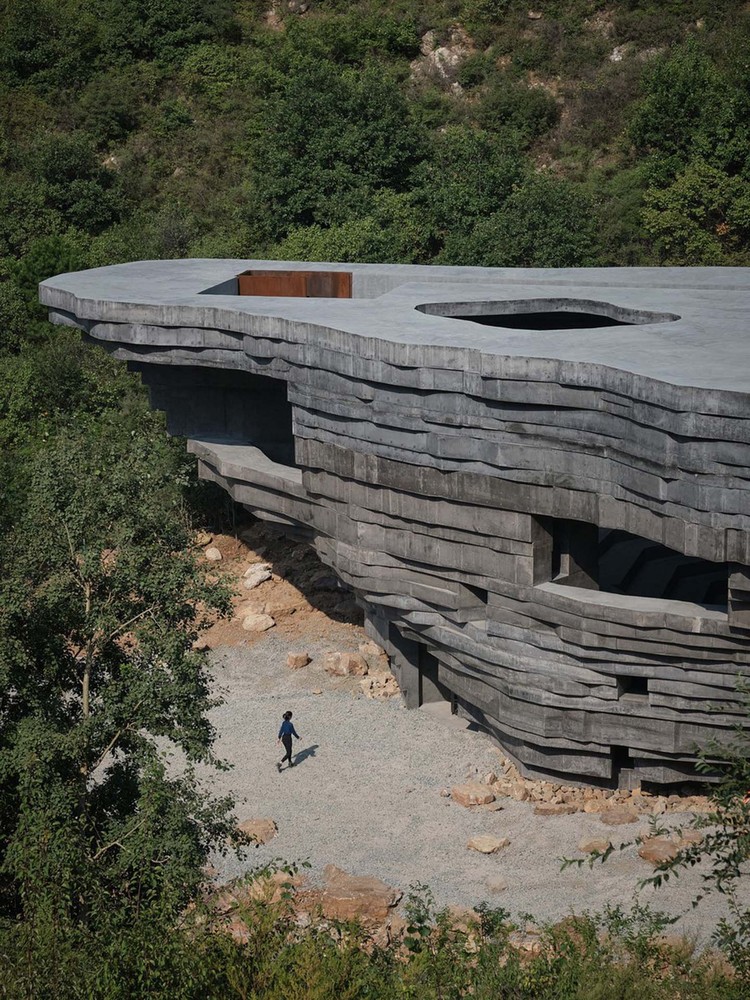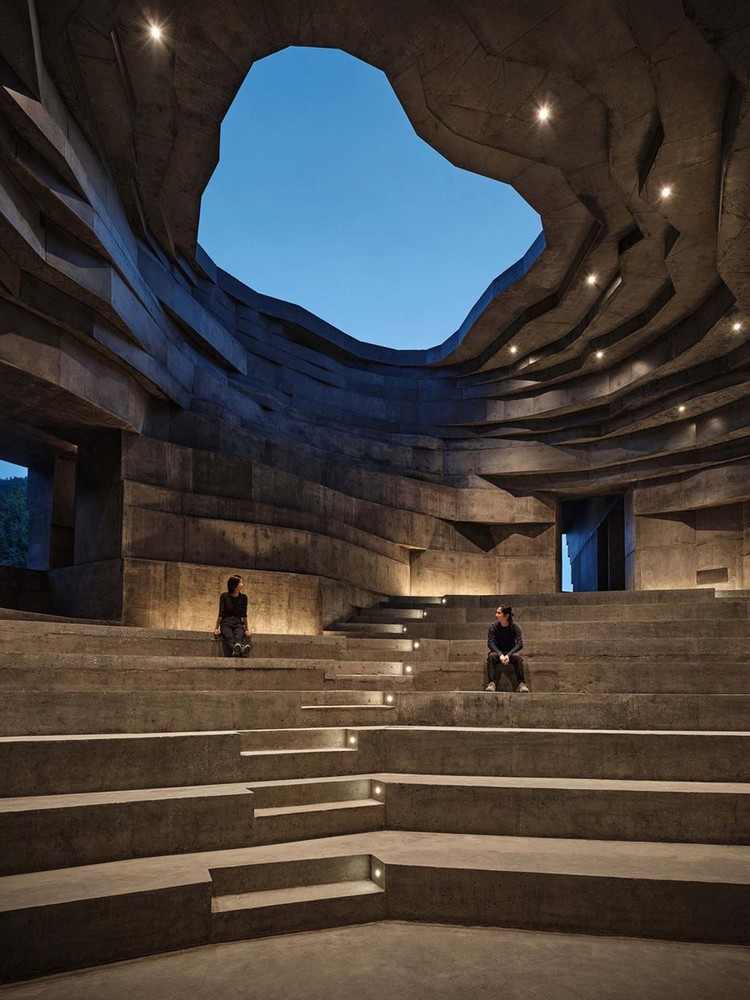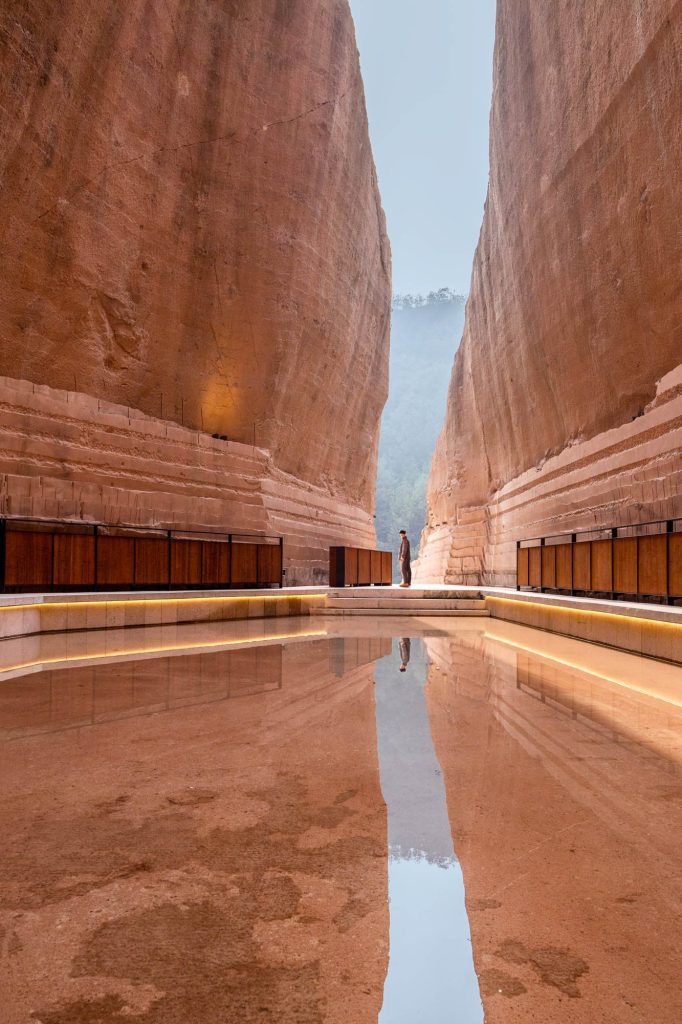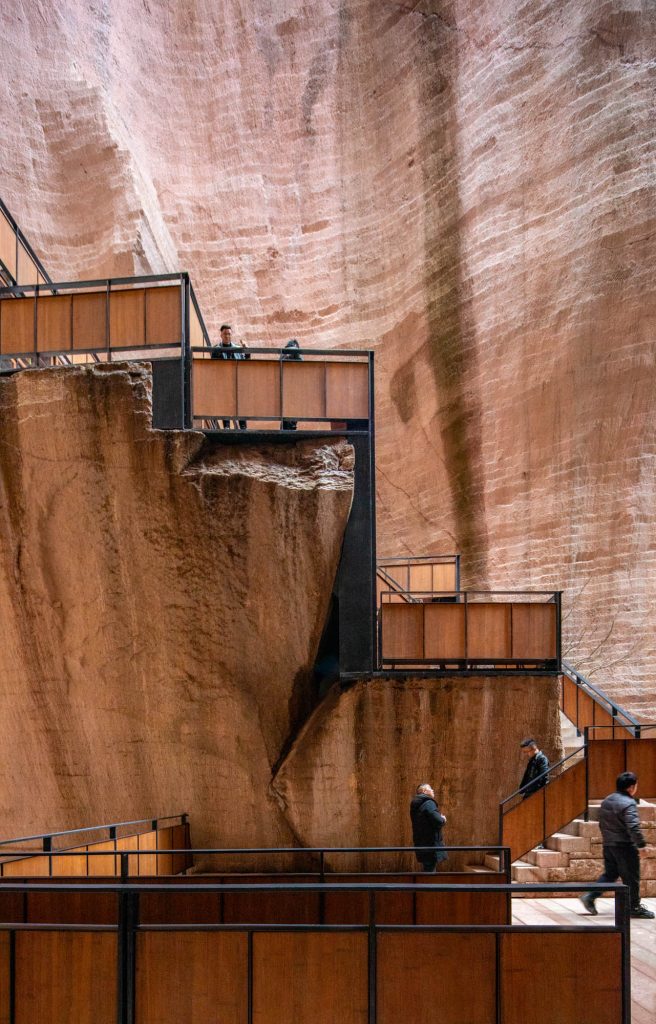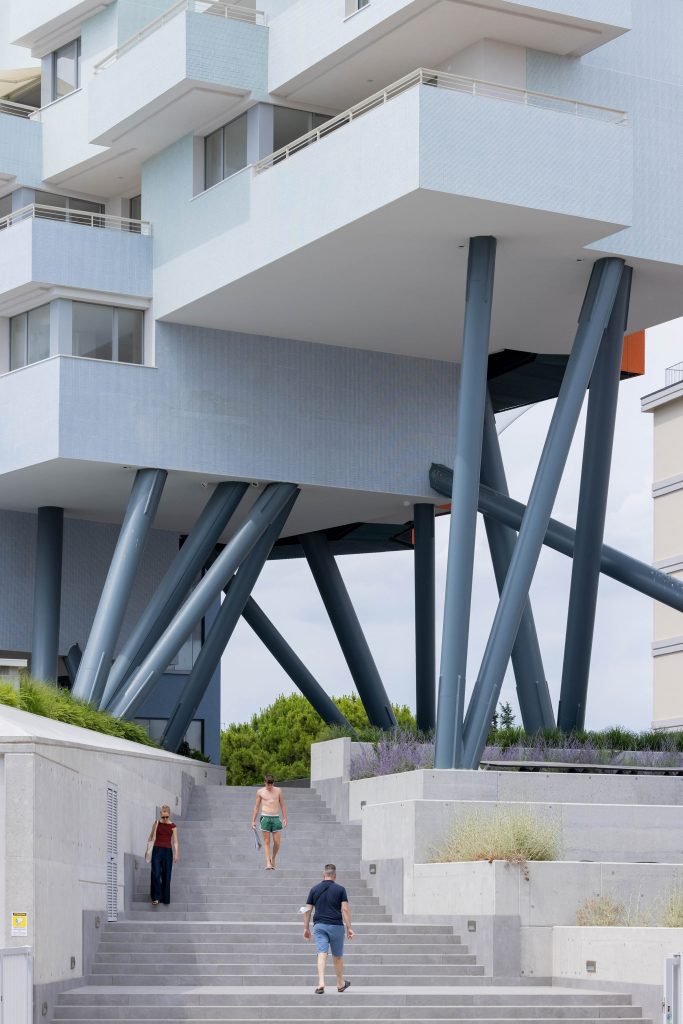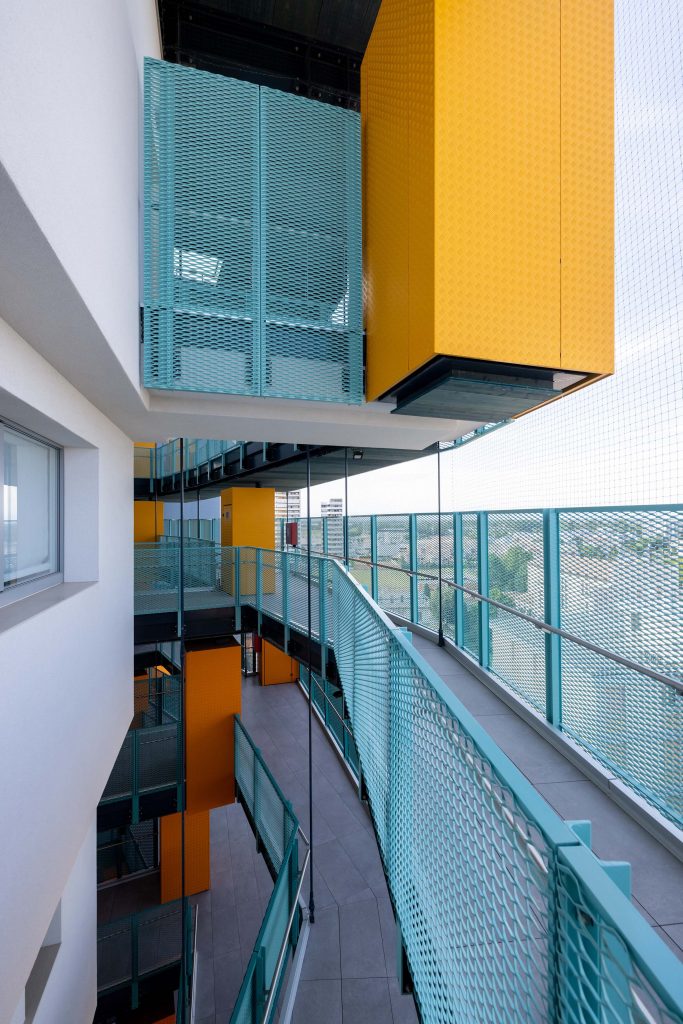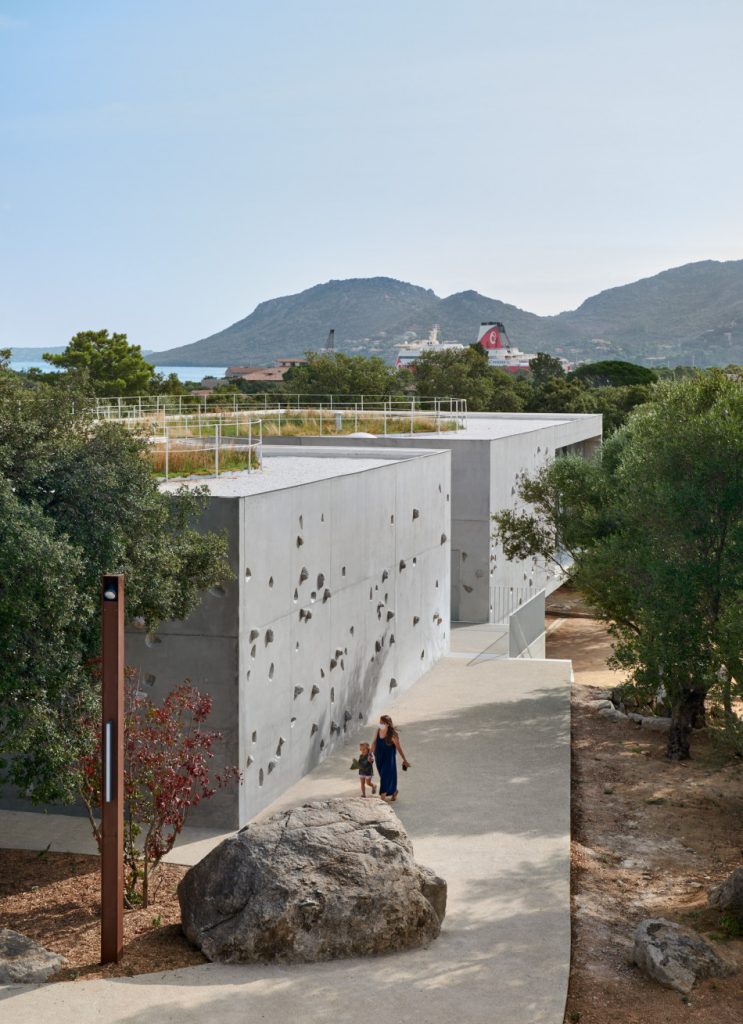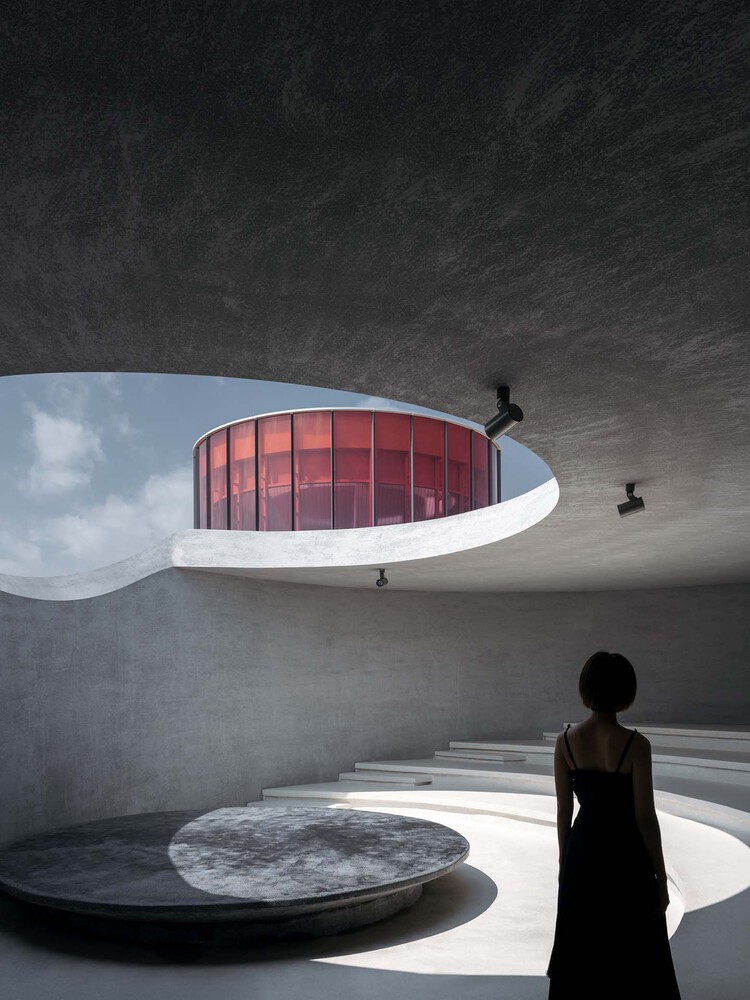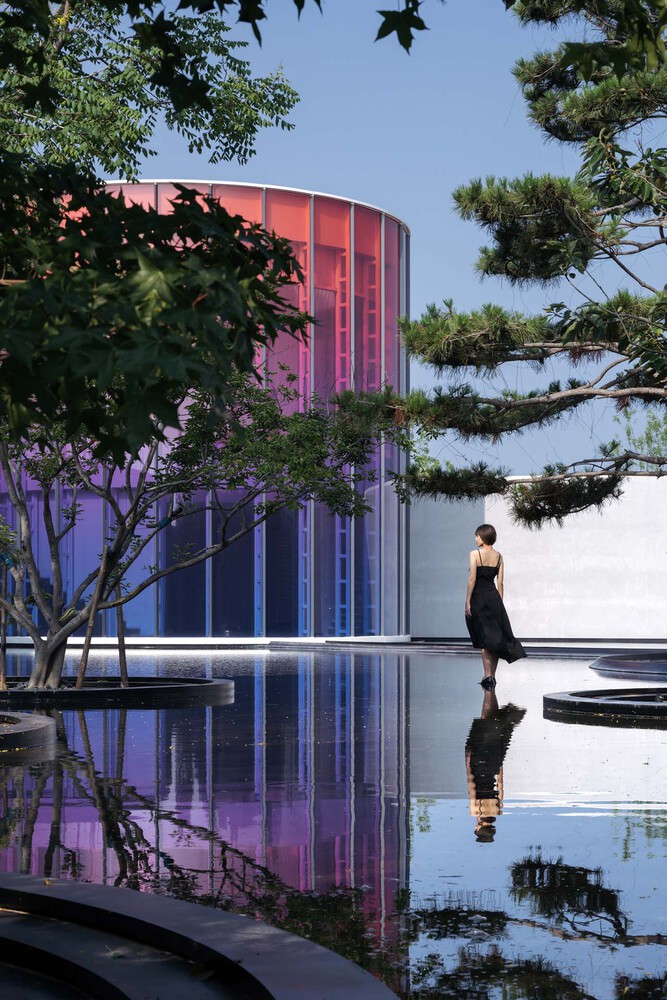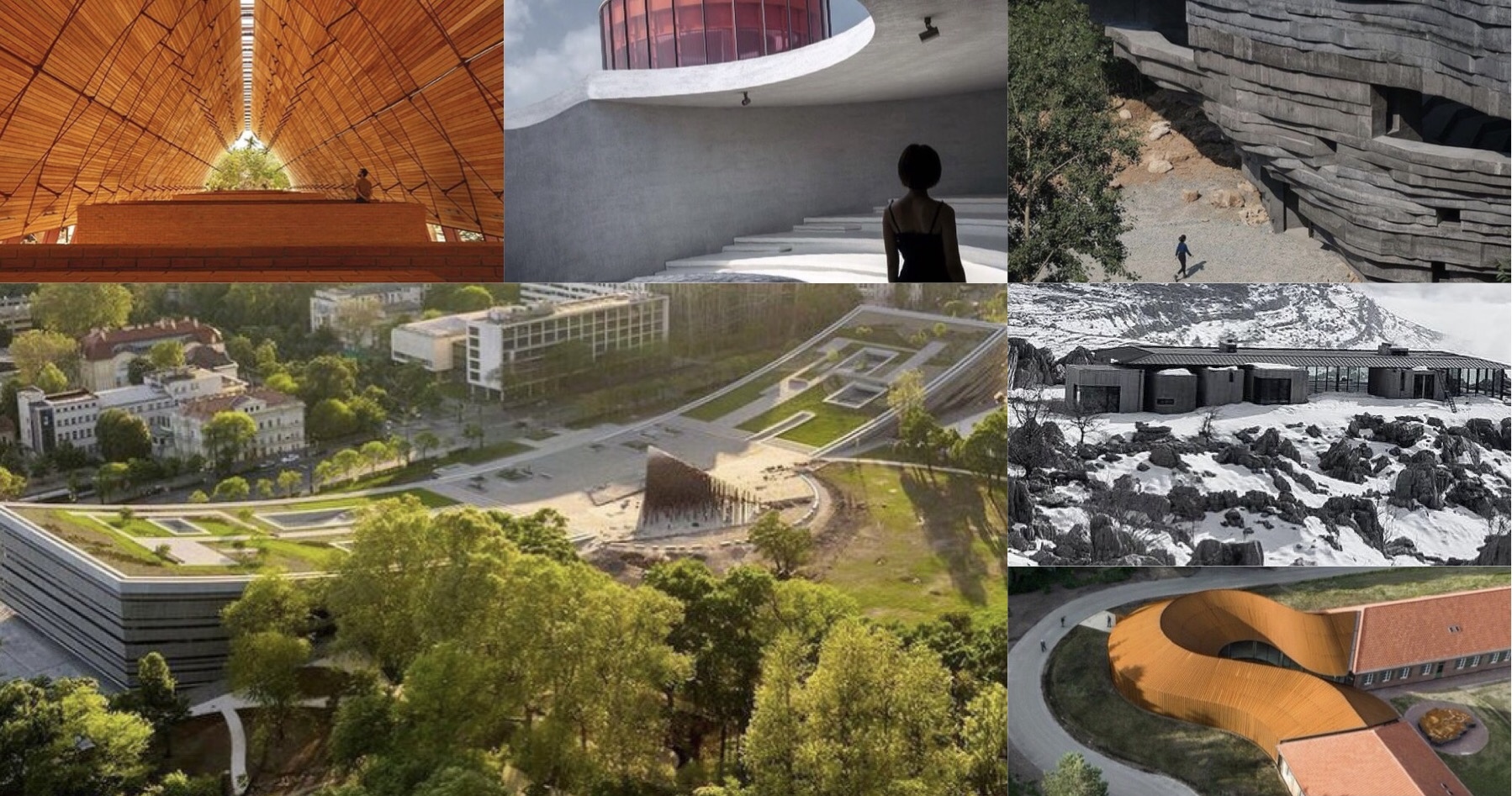
Best architecture projects of 2022
IQD has selected the best architectural projects built around the world in the period between 2021 and 2022
Museum of Ethnography – NAPUR Architect
- Architect: Napur Architect
- Place: Budapest, Városliget
- Year: 2022
- Photographer: Palkó György
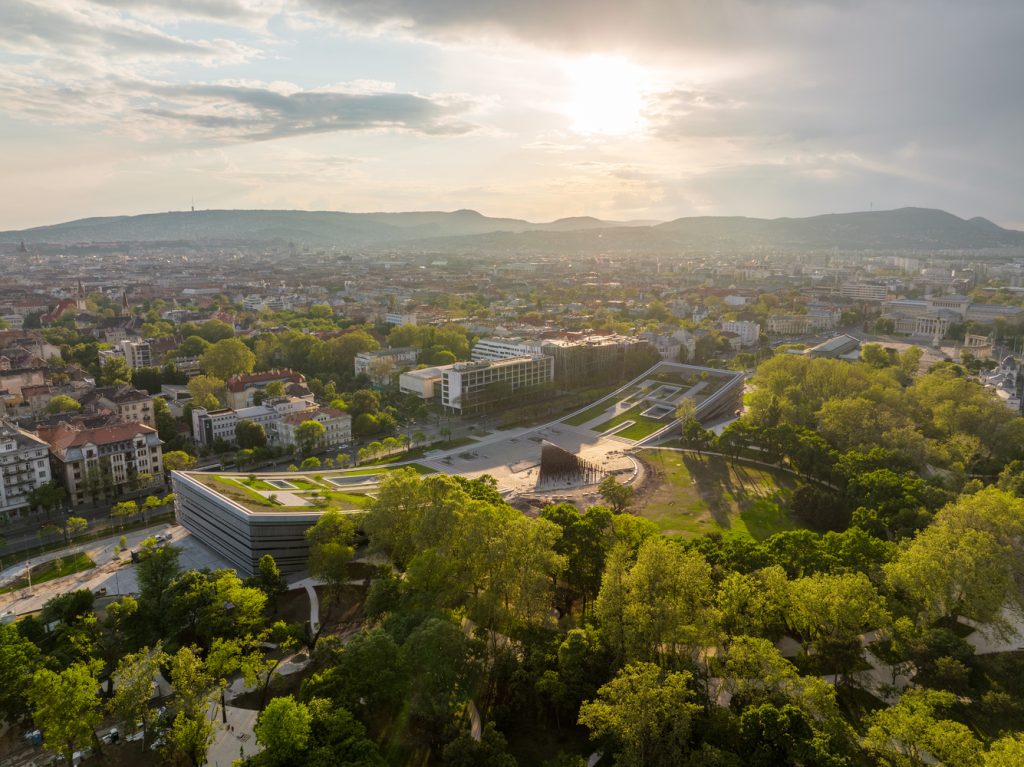
The museum evokes with its striking design a pair of green hillsides that gently slope towards a center. The other extraordinary peculiarity of the building is the glass curtainwall surrounding the landscaped green roof, covered with a rasterstructured metal mesh grid that, thanks to the insertion of nearly half a million small cubes, the pixels, features some ethnographic motifs selected from the museum’s Hungarian and international collections. On the ground level the museum building splits into two wings that extend upwards and flank a monument which is surrounded by a huge square, directly connected to the museum interiors. This iconic design hides a number of special technological solutions, such as the rare application of a post-tensioned structure to support the two arched wings. With the aim of extending the public green space available for the visitors to the public green space available for the visitors to the park, while offering them a stunning panoramic point, the landscaped roofs of the two wings have been covered with over 3,000 cubic meters of soil enriched with special nutrients where seven deciduous shrubs, almost 100 evergreens, about 700 specimens of ornamental grasses and 1,500 flowering and bulbous perennials have been planted, for a total of 7,300 square meters of green area. Read the full article here
CNAD National Centre for Art, Crafts and Design in Mindelo – Ramos Castellano Arquitectos
- Architect: Ramos Castellano Arquitectos
- Place: Mindelo, Cape Verde
- Year: 2022
- Photographer: Sergio Pirrone
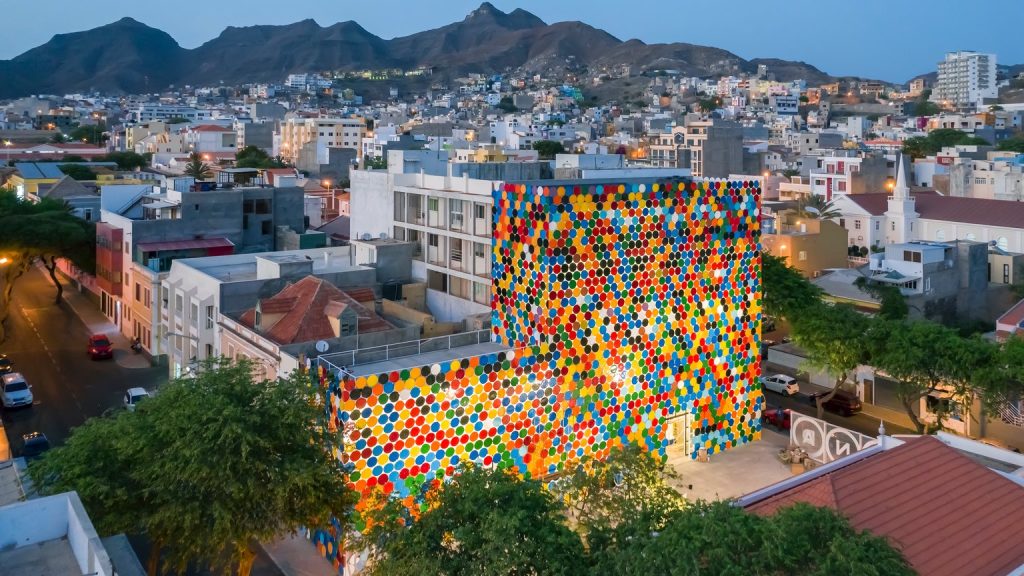
The works of the CNAD National Centre for Art, Crafts and Design in Mindelo, port city of Cape Verde, had to be handcrafted, and not only for the name and the function it was to perform, but above all because entrusting the manual works locally would have meant distributing the public funding, resulted from a great government effort, among the artisans of the isle. Thus fulfilling, all the more so since it is a public centre, one of the primary functions of architecture, namely that of being useful to the community. Every design choice, from materials to finishes, has been aimed at seeking to achieve this goal.
The construction and assembly work was carried out entirely by hand with the aid of machines which can be assimilated to simple working tools. The fair-faced concrete was reinforced by skilled carpenters with different available types of wood and plywood. The wooden frames were manufactured in artisan workshops with the aid of cutting and smoothing machines, where, however, the human element was predominant. In the metal structure, on which the prefabricated elements were mounted, welded and assembled by the carpenters, we have riveted 2,532 drumheads, recycled from old metal drums, which have been sandblasted and manually painted one by one, to form a vibrant, colourful ventilated façade. Read the full article here
Progreso Museum of Geology – Estudio MMX
- Architect: MMX
- Place: Boulevard Turístico Malecón, Progreso, Yucatan, Mexico
- Year: 2022
- Photographer: Dane Alonso

The architecture firm Estudio MMX, founded in 2010 in Mexico City by architects Jorge Arvizu, Ignacio del Río, Emmanuel Ramírez and Diego Ricalde, has recently completed the new Museum of Geology located by the beach of the port city of Progreso in the Mexican Yucatan Peninsula. The city is a gateway to the Mayan archaeological sites of Chichen Itza, Uxmal and Dzibilchaltun. The museum complex is formed by a series of blocks arranged in a grid. Their triangular openings recall the shape of the region’s Mayan pyramids. The museum has been completely covered in chukum, a natural material of Mayan origin made with the powdered bark of a small thorny tree of the same name, which improves its durability and facilitates low maintenance costs. Read the full article here
FLUGT – Refugee Museum in Denmark – BIG Bjarke Ingels Group
- Architect: BIG Bjarke Ingels Group
- Place: Oksbøl, Denmark
- Year: 2022
- Photographer: Rasmus Hjortshoj, Mike Bink
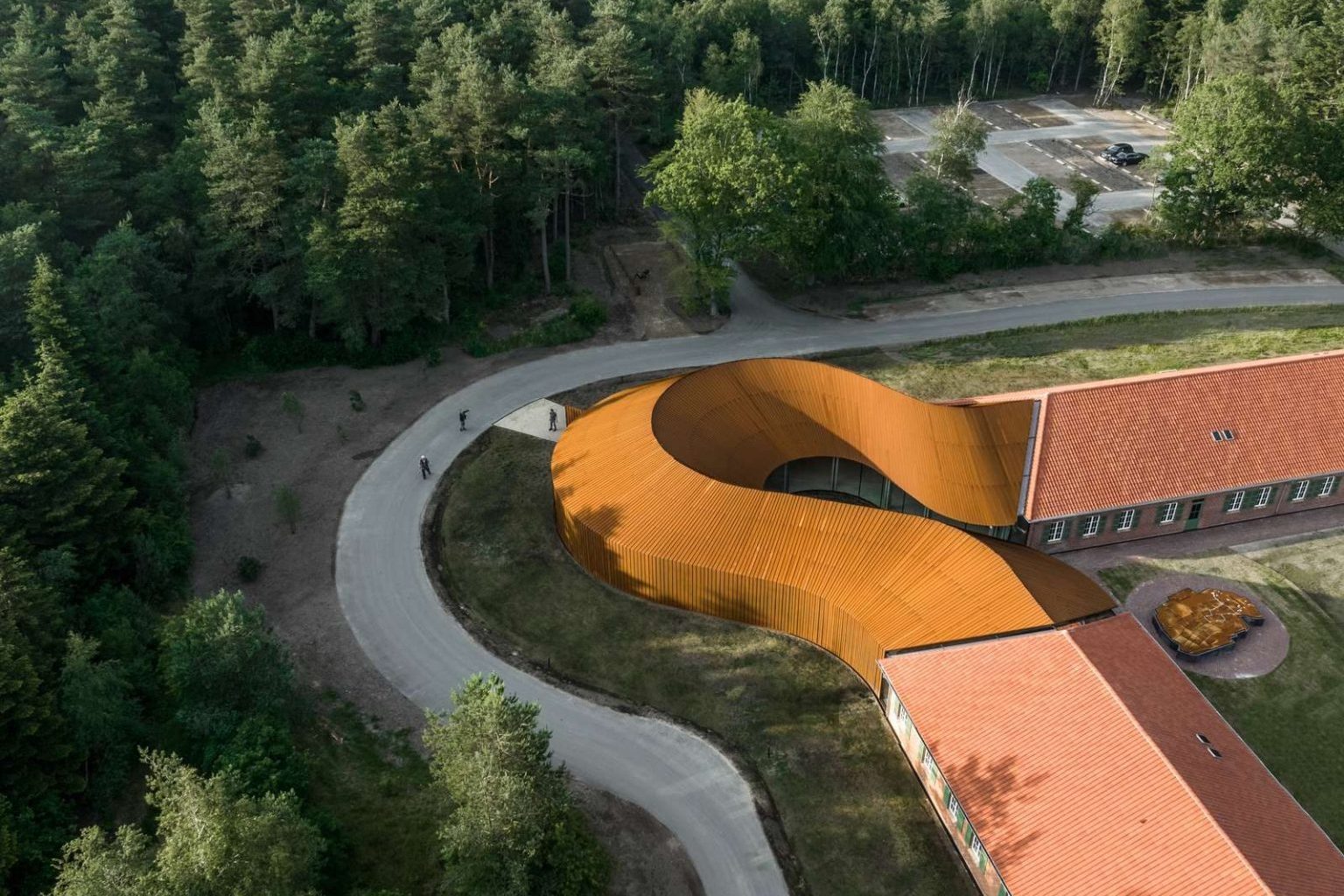
The project, entrusted to design firm BIG Bjarke Ingels Group, was conceived with the aim not only to tell the story of the largest stream of refugees that Denmark has ever received, giving them a voice and a face, but also to focus attention on the burning issue of refugees, asylum-seekers and migrants of all times. For the creation of this 1,600 sqm museum, firm BIG has preserved and restored the two wings of the former hospital, one of the camp’s few remaining structures, and added a new curve-shaped volume that connects them. The two original wings of the former hospital retain the exterior with red-tiled roofs and red brick walls marked by a row of small-mullioned windows. Inside, the old wards and operating rooms have been turned into modern spaces to accommodate a cinema, a cafeteria, a conference room and eight large exhibition spaces, where the experiential design by the Dutch company Tinker Imagineers brings the stories of refugees to life through sound, images and interactive elements. Read the full article here
Muelle de San Blas – Colectivo C733
- Architect: Colectivo C733
- Place: San Blas, Nayarit, Mexico
- Year: 2022
- Photographer: Albers Studio

In March 2019, the SEDATU Secretariat of Agrarian, Land, and Urban Development commissioned the National Autonomous University of Mexico, through the Faculty of Architecture, to design urban infrastructures in highly vulnerable cities. The Faculty thus called over forty architects with academic positions to draw up a competition for different types such as economics, education, culture, health and sport. Among the various public spaces included in the redevelopment program, Colectivo C733 signed the restoration and development project of the Pier of San Blas, which includes a port for ferries and boats for tourist services, a public and recreational park as well as commercial areas and a craft market.
This 14,000 sqm park, completed this year, features a composition of lines with narrow waterways that offer visitors a breath of fresh air, rain gardens with local stone and passages that wind their way inspired by the movement of boats and waves, creating leisure spaces and waiting areas under the shade of new and existing trees or under the large wooden arches covering a series of local clay structures. The chromatism of the complex is defined by the ochre of the wood, the reddish tones of the clay and the colors of the concrete that change its texture and patterns throughout the landscape. Read the full article here
Rambla Climate-House – Andrés Jaque / Office for Political Innovation + Miguel Mesa del Castillo
- Architect: Andrés Jaque / Office for Political Innovation + Miguel Mesa del Castillo
- Place: Molina de Segura, Spain
- Year: 2021
- Photographer: José Hevia
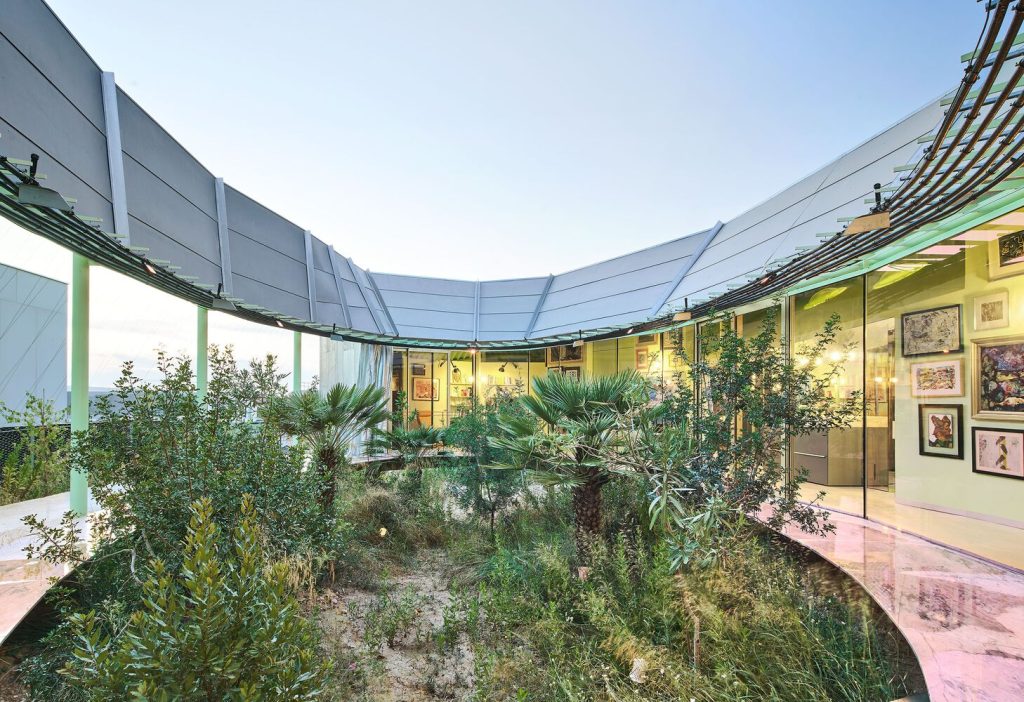
The Rambla Climate-House, designed by Andrés Jaque and his studio the Office for Political Innovation and Miguel Mesa del Castillo, “works as a climatic and ecological device“. It is part of a series of associative initiatives, developed at the scale of independent citizens, to contribute to reparations for the environmental and climate damage caused by over urbanization in Molina de Segura. The Rambla Climate-House collects pooled rainfall from its roofs and greywater from its showers and sinks to spray onto the Rambla’s remains and regenerate their former ecologic and climatic constitution. The house is organized around this elliptical section of rambla, as an observatory in alliance to this reconstructed landscape and as a sequence of interconnected spaces of different widths. Following the reparation of the hydrothermal conditions of the rambla, glimpses of its former more-than-human life have rapidly re-emerged after a one-year period. Now, brachypodiums, myrtles, mastic trees, fan palms, oleanders, and fire trees grow in the elliptical section. Insects, birds, and lagomorphs find shelter in it. Read the full article here
Royal College of Art – Herzog & de Meuron
- Architect: Herzog & de Meuron
- Place: London, UK
- Year: 2022
- Photographer: Iwan Baan

On 23 May, the new campus of the Royal College of Art, the world’s leading art and design university, opened in Battersea, London’s creative quarter. Designed by internationally acclaimed architects Herzog & de Meuron, the campus marks an important milestone in the university’s history and will see its course offering expanded into computer, material, and data sciences, robotics, and advanced manufacturing – enabling students to look beyond traditional creative practice to create solutions to some of the world’s most pressing issues. It is a flexible architectural solution that adapts to the constantly changing programmes of teaching and research at this 185-year-old institution, with the aim to unite and strengthen the culture of design innovation and entrepreneurialism at the Royal College of Art (RCA).
The interiors are formed from a combination of concrete flat slabs supported on an 8 m grid of concrete filled steel tubes. The ground floor façade is formed from a simple stock brick in a textured Flemish bond, perforated in areas with open patterned brickwork to provide ventilation to the workshop and sculpture studio behind operable glass panels. On the upper studio storeys, the ground floor brick pattern is turned inside-out, exposing the cut ends of the header bricks and marks of manufacture through a distinctive texture. The Research Building departs from the masonry language with a vertical composition of sinuous white fins, calibrated across the façade to moderate solar gain and glare, and facilitate natural ventilation to the workspaces within. Read the full article here
Green Corner Building – Studio Anne Holtrop
- Architect: Studio Anne Holtrop
- Place: Al Muharraq, Bahrain
- Year: 2021
- Photographer: Anne Holtrop
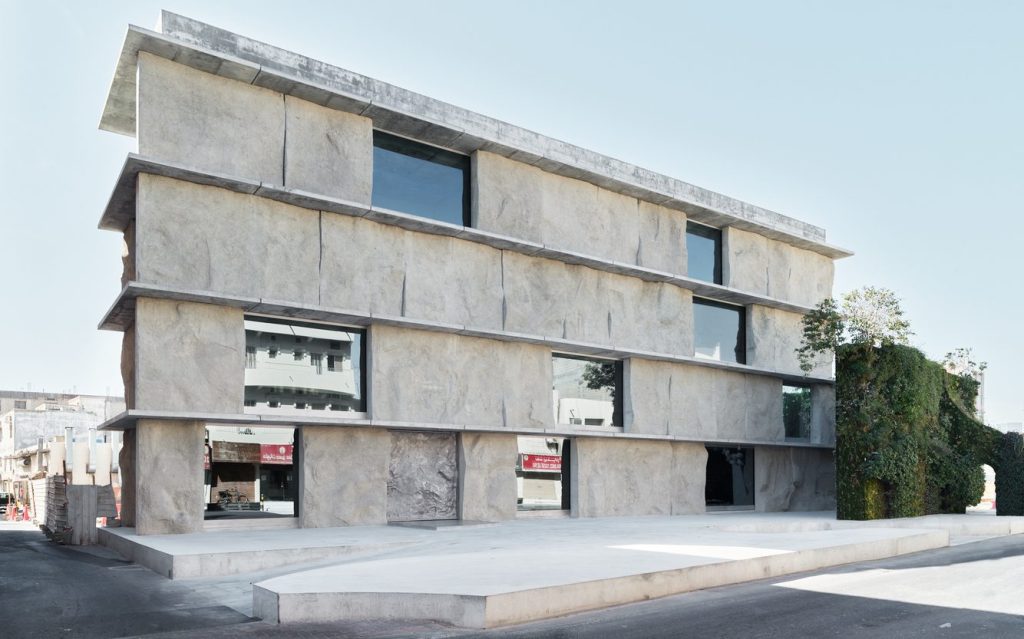
Commissioned by the Shaikh Ebrahim Cultural Center, the new Green Corner Building project in Muharraq, Bahrain, -designed to house on a 1,190 sqm area an art collection, an area dedicated to the restoration of historical works and
manuscripts and an archive of works of art and literature from Bahrain – is a brilliant example of material becoming essence and protagonist of a project. Designed by the Dutch Studio Anne Holtrop, the building, a very thin parallelepiped, has made of its main façade the dominant structural element. The building, whose floor plan consists of two identically-sized large rooms and a central core in between, has a very simple structure, formed by large rough concrete slabs, cast on the ground next to it. In this way, the design studio managed to establish a strong dialogue with the context through the exaltation of local materials and craft techniques typical of the region. Read the full article here
Chapel of Sound – OPEN Architecture
- Architect: OPEN Architecture
- Place: Chengde, China
- Year: 2021
- Photographer: Jonathan Leijonhufvud, Runzi Zhu, Nan Ni, Right Angle
Nestled in a mountainous valley two hours away by car from the center of Beijing, The Chapel of Sound is a monolithic open-air concert hall with views to the ruins of the Ming Dynasty-era Great Wall. Designed by Beijing-based architecture office, OPEN Architecture, to look as a mysterious boulder that had gently fallen into place, the building is built entirely from concrete that is enriched with an aggregate of local mineral-rich rocks, and encompasses a semi-outdoor amphitheater, outdoor stage, viewing platforms, and a green room. OPEN’s founding partners Li Hu and Huang Wenjing were driven by a desire to minimise the footprint of the concert hall in the valley, creating a structure that was in dialogue with impressive natural landscape, while also feeling undeniably man made. The resulting rock-like structure is composed of an inner and outer shell with the space between operating like a truss, and was ultimately achieved through close collaboration with international engineering firm, Arup. Read the full article here
House TO – Ludwig Godefroy Architecture
- Architect: Ludwig Godefroy Architecture
- Place: Puerto Escondido, Oaxaca, Mexico
- Year: 2022
- Photographer: Jaime Navarro

Casa TO, deigned by Ludwig Godefroy Architecture is located in La Punta Zicatela, Mexico, a place on the Pacific coast of golden sunsets, where the sea, the sand, and the cliffs form a unique panorama. A discreet oasis of unusual architecture to immerse yourself in a state of absolute reflection. The project was outlined under the imprint of simplicity and conceptual elegance, where tradition and avant-garde are amalgamated in an unprecedented structure embraced by the tranquility of nature. Through the interior views, a haven is created bordered by the sky, the forcefulness of the walls, and by the vegetation with shoots of vines and banana and passion fruit trees. In its 600-square-meter surface, Godefroy intertwines aesthetics and functionality, emphasizing the honesty of the textures of raw materials, such as concrete, steel, clay, and wood. Read the full article here
Zeya Longxi Art Gallery – FAX Architects
- Architect: FAX Architects
- Place: Zeya Town, Ouhai District, Wenzhou City
- Year: 2022
- Photographer: Wu Changle
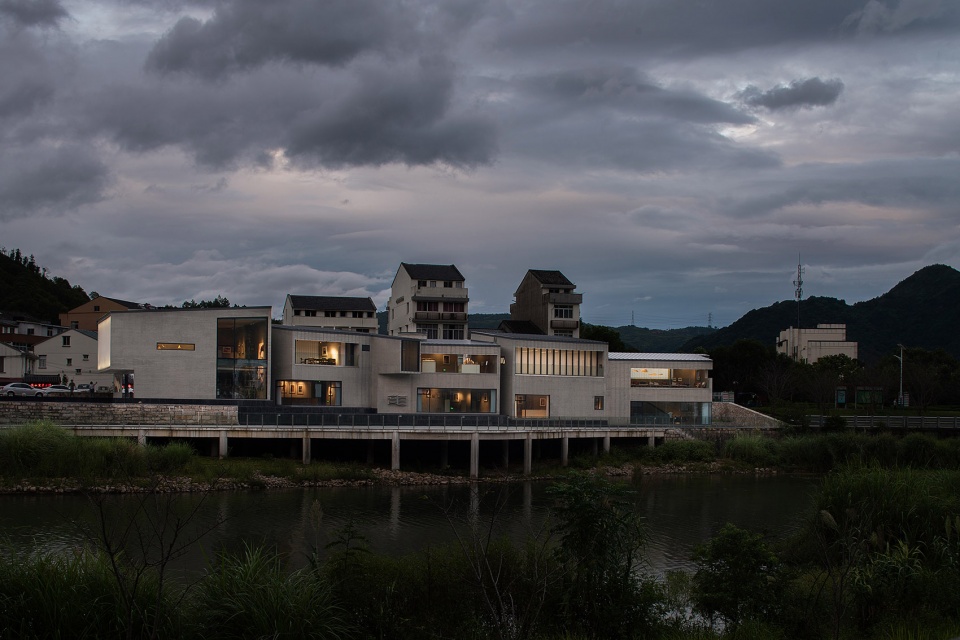
Zeya, in the west part of Ouhai district, in eastern China, is rich in historical and architectural heritage, with buildings dating back to the Ming Dynasty and the Qing Dynasty, as well as craftsmanship heritage, with the oldest papermaking tradition in the world. In this considerable context, cradle of the most ancient Chinese culture, firm FAX Architects was commissioned to design an important Art Center, expected to interface with the town, with the goal of involving the inhabitants in the renewal of the local cultural network. The land lot destined to the construction of the Art Gallery was long and narrow, closed between the banks of Longxi River to the west and the intersection of two major roads – Tongjing Road and Wenyuan Road – to the east. With these premises, the main focus of the designers was to establish a dialogue between the new construction and the river, the local buildings and the traditional activities, as well as to explore the critical relationship between life in the towns and the rural life in the villages. Read the full article here
Jinyun Quarries – The Quarry as Stage / DnA_Design and Architecture
- Architect: DnA_Design and Architecture
- Place: Jinyun County Bihui Quarry, Jinyun County, Zhejiang, China
- Year: 2021
- Photographer: Wang Ziling © DnA_Design and Architecture
The mountainous landscape of Jinyun County in Zhejiang Province, China, has been shaped by the manual mining of natural stone. For the rugged and hard-to-access region, the Beijing architect Xu Tiantian and her team DnA_Design and Architecture asked to develop strategies for new uses for nine of the over 3000 small, abandoned quarries, which now provide a stage for cultural and social activities, and simultaneously strive for ecological improvements and create new economic perspectives for the rural population. The pits, provided with new functions, have become part of a public infrastructure that puts historical aspects extending back over a thousand years as well as the everyday culture heritage in a new context.
The exhibition presents all of the nine former stone quarries that have already been completed for new utilizations as well as those in planning. The individual locations are each characterized by very individual and random forms cut into the rock and are connected by a footpath that is routed over stairways due to the differences in elevation. The stone quarries are situated within a radius of one kilometre and contribute as a pilot project to revitalizing the landscape and the region by means of the smallest-scale interventions possible. The simple, very careful interventions by the architect contrast with the ‘over-designing’ of rural areas, in the sense of kitschy romanticizing or ‘Disneyfication’, which has become common in many places in China. Read the full article here
The Procuratie Vecchie – David Chipperfield Architects
- Architect: David Chipperfield Architects
- Place: Venice, Italy
- Year: 2022
- Photographer: Alberto Parise, Alessandra Chemollo, Martino Lombezzi
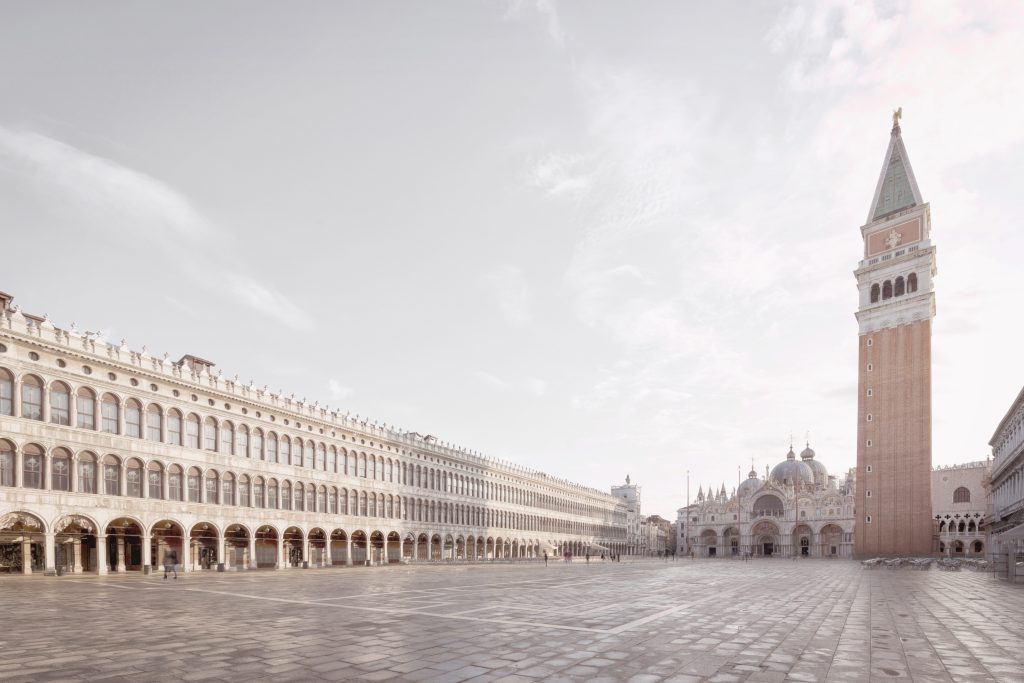
The Procuratie Vecchie was once home to the Procurators of Saint Mark, who, in addition to being senior city officials, were also responsible for looking after the poor and needy of Venice. The project is not defined by a single concept or architectural gesture, but by a series of interventions that address the complexity of the work. These include the restoration of the first and second floors, the reorganisation of accessibility and usability of the building through the inclusion of new staircases, and the renovation of the central pavilion on the third floor leading to the exhibition spaces open to the public and linked to The Human Safety Net, as well as workspaces and an auditorium. In the interventions, ancient and traditional local construction techniques, as well as local artisan labour (craftsmanship) were engaged for flooring, walling and ceiling using pastellone, terrazzo, marmorino and scialbatura (whitewashing) at lower levels, but also cocciopesto and cotto at top level, with the intent not to impose but rather to inherit, for completing what has been there for centuries in a single whole. Read the full article here
Minhang Riverfront Regeneration – SPARK Architects
- Architect: SPARK Architects
- Place: Shanghai, China
- Year: 2021
- Photographer: Shine Lab, Wei Min
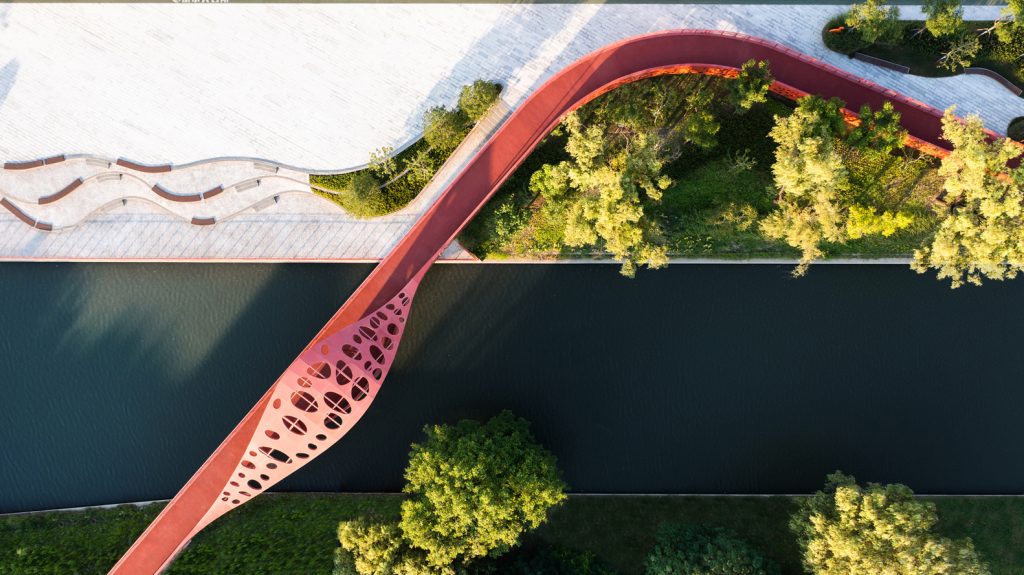
Architecture firm SPARK, with offices in Singapore, Shanghai and London, has recently completed the Minhang Riverfront Regeneration, the initial phase of the ambitious regeneration masterplan of the public space of the Minhang district of Shanghai. A mere two years ago the riverside area was in a state of total abandonment, faced by old disused industrial warehouses, remnants of paths and traces of many years of neglect. Today Minhang has become a vibrant district, animated by commercial, technological and institutional spaces, connected by the new 23,787 sqm urban park, within which almost all the pre-existing buildings have been upgraded. In the Minhang Riverfront Regeneration, in Shanghai, SPARK’s design concept used the shapes of Diatoms, the unicellular algae that perform a natural water purification action, as a recurring captivating motif. The shapes of the Diatoms have been abstracted and reproduced into the two- and three-dimensional objects that animate the river banks, telling the story and the regeneration of the river and of the surrounding environment. Read the full article here
Convent Saint François – Amelia Tavella Architectes
- Architect: Amelia Tavella Architectes
- Place: Sainte Lucie de Tallano, Corse, France
- Year: 2021
- Photographer: Thibaut Dini
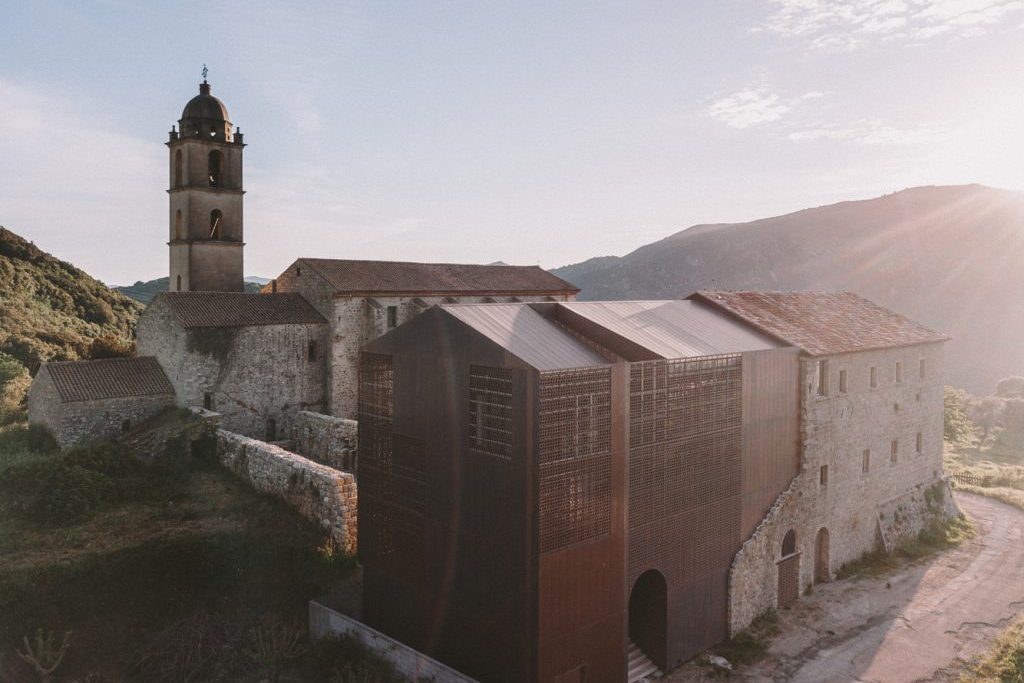
Amelia Tavella has just completed the rehabilitation and extension of the Convent Saint-François, in Santa-Lucia di Tallano, Corsica. This partially ruined building from 1480, a historical monument, had been abandoned for a very long time. “I walked in the footsteps of the past, connecting beauty to faith, faith to art, moving minds from before to a form of modernity that never alters or destroys. The ruins are marks, vestiges, imprints, they also tell the foundations and a truth, they were beacons, cardinal points, directing our axes, our choices, our volumes. Building after ruins is the past and modernity embracing each other, making the promise never to betray each other. One becomes the other and no one is erased. It is an interweaving of an older time in a new time which does not undo, which does not recompose, but which links, attaches, grabs, two unknown and not foreign parts, one of which becomes the extension of the other. in a sort of transfiguration”. Read the full article here
House On the Rocks – Karim Nader Studio
- Architect: Karim Nader Studio
- Place: Faqra, Lebanon
- Year: 2021
- Photographer: Dia Mrad
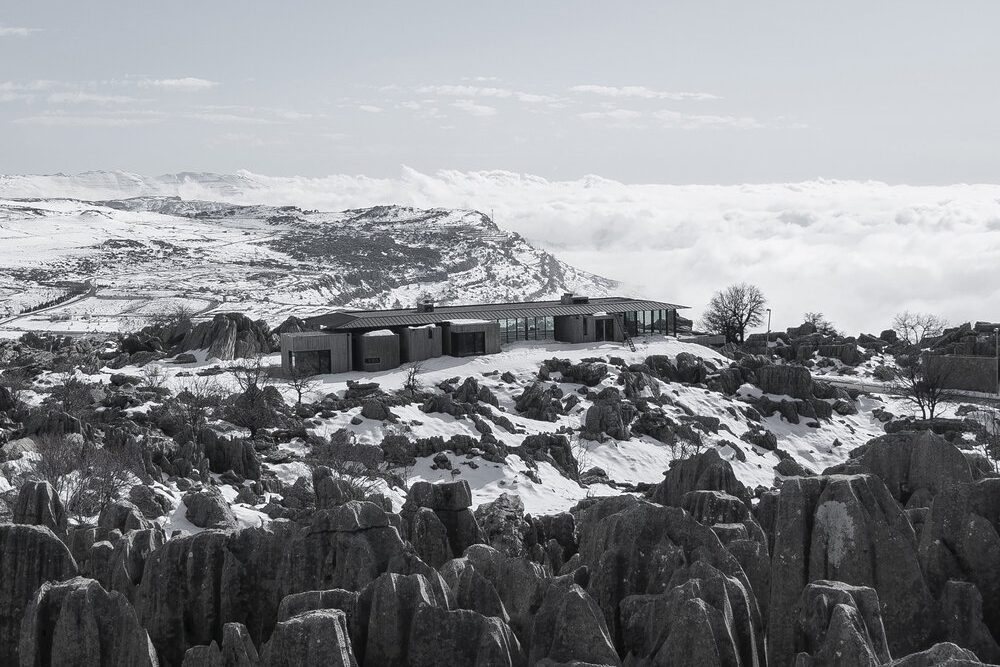
On a uniquely beautiful but challenging site in Faqra, Mount Lebanon Governorate, the Lebanese architect Karim Nader completed a concrete and glass retreat, set among limestone rocks to the point of seeming their natural extension. Located at 1,700 m above sea level, the house, with its transparency and the concrete in the same shade of gray as the rocks, looks like a rock formation carved by millennia of rain, snow and wind. The house is made up of a dynamic and studied sequence of rooms entirely made of concrete and large glazed openings, gathered under a 18 m long zinc bridging roof. The house is accessed via a stunning long floating staircase, located on the west side, which, meandering between the rocks and the built volumes, leads to a large reception platform-terrace, located on the south side, where a long pool juts out towards the view and cascades down towards the street. Read the full article here
Aarhus School of Architecture – ADEPT
- Architect: ADEPT
- Place: Aarhus, Denmark
- Year: 2021
- Photographer: Ramus Hjortshøj
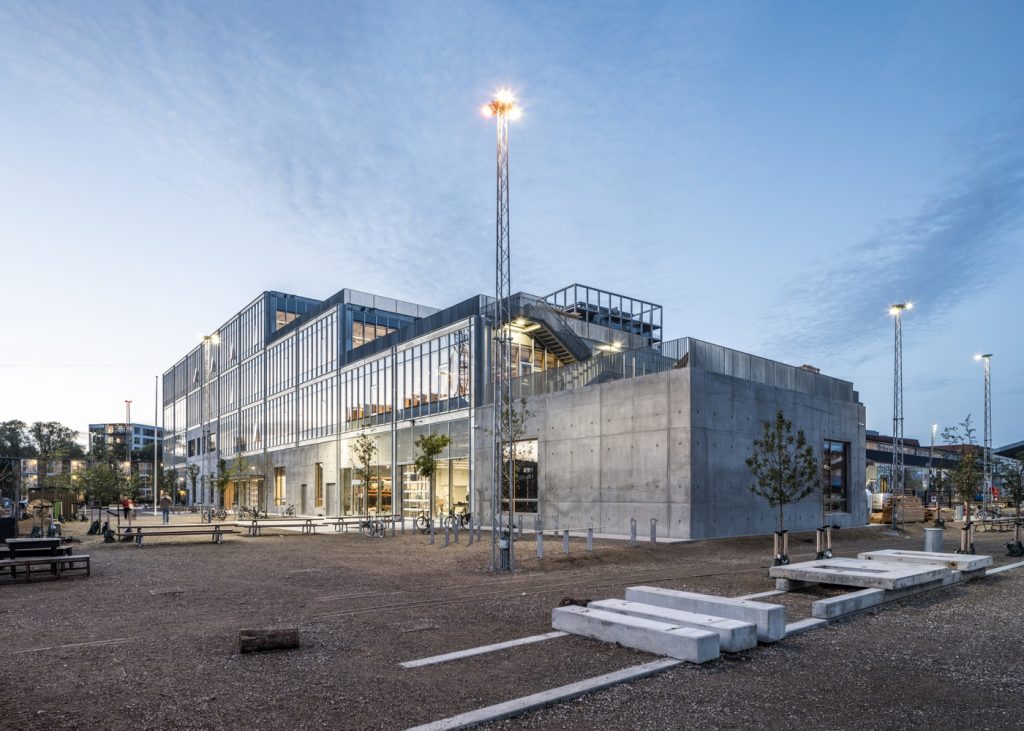
Inspired by 21st century learning principles, the new School of Architecture was designed this year in Aarhus, Denmark, as an incubator for architectural experiments, workshop-based learning and unplanned synergies between students. The structure, designed by the Danish firm ADEPT, is raw, almost resembling an industrial building, but only at first glance, as the refined detailing and strong spatial organization deliberately communicates how a building is constructed: how to refine a design through a few carefully selected materials, to allow architecture to abandon any form of protagonism and to step into the background as a flexible framework for activity. Read the full article here
Le Bâtiment Descendant l’Escalier – ELASTICOFarm
- Architect: ElasticoFarm
- Place: Jesolo, Italy
- Year: 2022
- Photographer: Iwan Baan
Le Batiment Descendant l’Escalier, designed by architecture firm ELASTICOFarm, in Jesolo, a seaside tourist destination near Venice, Italy, emerges with strength and determination amid suburban sameness to affirm the need for renewal and redemption from the banal uniformity of the surrounding constructions. The result is a work of great impact, in which an effective relationship is established between private and shared spaces, and with the public realm of the city. Le Batiment Descendant l’Escalier is a project that, starting from the peculiarities of the place and the client’s request, develops without apparently questioning either one or the other. However, the project tries to exploit the position and the building typology to imagine an architecture in which the use of shared spaces becomes its best quality. Read the full article here
San Giacomo Apostolo Church and Parish Complex – Benedetta Tagliabue – EMBT
- Architect: Benedetta Tagliabue – EMBT
- Place: Ferrara, Italy
- Year: 2021
- Photographer: Marcela Grassi, Mattia Pedrazzi

Benedetta Tagliabue – EMBT presents its project “San Giacomo Apostolo” church and parish complex in Ferrara, Italy. This work has been developed over 10 years (2011–2021) and is a value for the peripheral neighbourhood of Arginone, since the new complex is available to the entire community, both ecclesiastical and secular. The complex consists of a church of 710 m2, a parish complex of 873 m2 and a landscaped outdoor space of 600 m2. Nature is present in every facet of this project. From the exterior, you can see a light building of organic shapes, surrounded by a slender grove, which is accessed through two lateral routes that lead to a naturalistic design square in front of the church, which acts as a meeting point and symbolizes the centre of two large arms open to the community. The church surprises with its light and suspended roof, with an undulating silhouette covered with copper that is inspired by the aerial and monumental forms of a hot air balloon. Read the full article here
Animu Media Library / Dominique Coulon associés in collaboration with Amelia Tavella Architectes
- Architect: Dominique Coulon associés in collaboration with Amelia Tavella Architectes
- Place: Porto Vecchio, Corsica
- Year: 2022
- Photographer: Eugeni Pons
The proposed site was occupied by not only a number of beautiful oak and olive trees, but also some magnificent rocks. This made it a wonderful site, placing additional responsibility on the architect. The principle of the project consists of preserving the landscape. A precise survey was drawn up of every tree and every rock. The shape of the building is deduced from these characteristic elements, which we were anxious to preserve. The building appears to float above the landscape, with as little impact on it as possible. In accordance with this avoidance strategy, its curves are designed to circumvent the trees and rocks. The building functions as the opposite of a presentation box, embracing the landscape the better to protect it. A ramp leads users towards their special garden, thought out as a place for reading in the open air, while a summer bar slips into the space beneath the building to provide a shaded terrace. The underside of the building is designed as an area in its own right – a space facing the garden. Read the full article here
Mirai House of Arches – Sanjay Puri Architects
- Architect: Sanjay Puri Architects
- Place: Bhilwara, Rajasthan, India
- Year: 2022
- Photographer: Dinesh Mehta
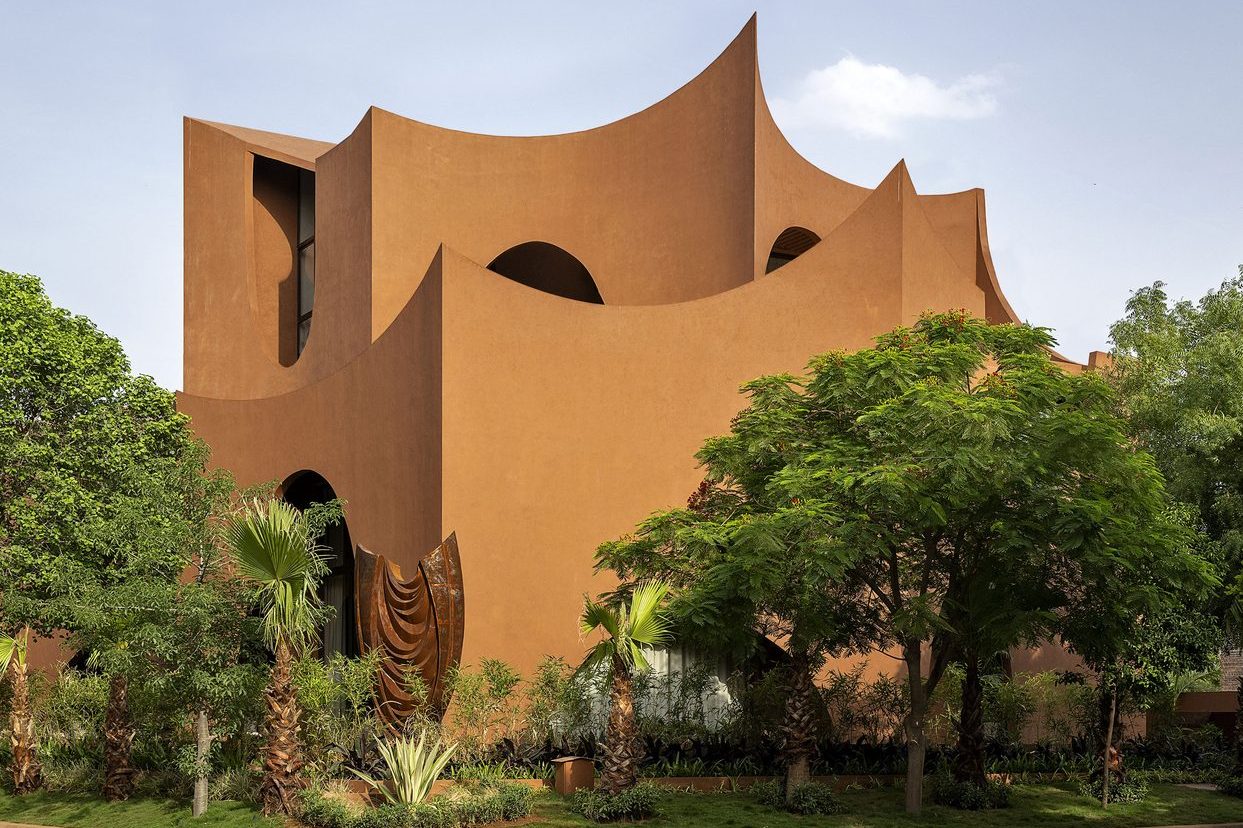
Designed by architecture studio Sanjay Puri Architects, on a small corner plot of 622 sqm within a residential villa layout, Mirai is a contextual house in response to the hot desert climate of Rajasthan, India. Designed to mitigate heat gain in response to the hot avid climate of its location, this envelope keeps the entire house cool in the hot summer months with temperatures in excess of 40°C for 8 months of the year. This sculptural house is contextual to its surroundings, the climate & the owner’s needs creating an interesting play of volumes, open enclosed & semi-enclosed spaces at every level. Read the full article here
Café Teri – NAMELESS Architecture
- Architect: NAMELESS Architecture
- Place: Daejeon, South Korea
- Year: 2022
- Photographer: Kyung Roh
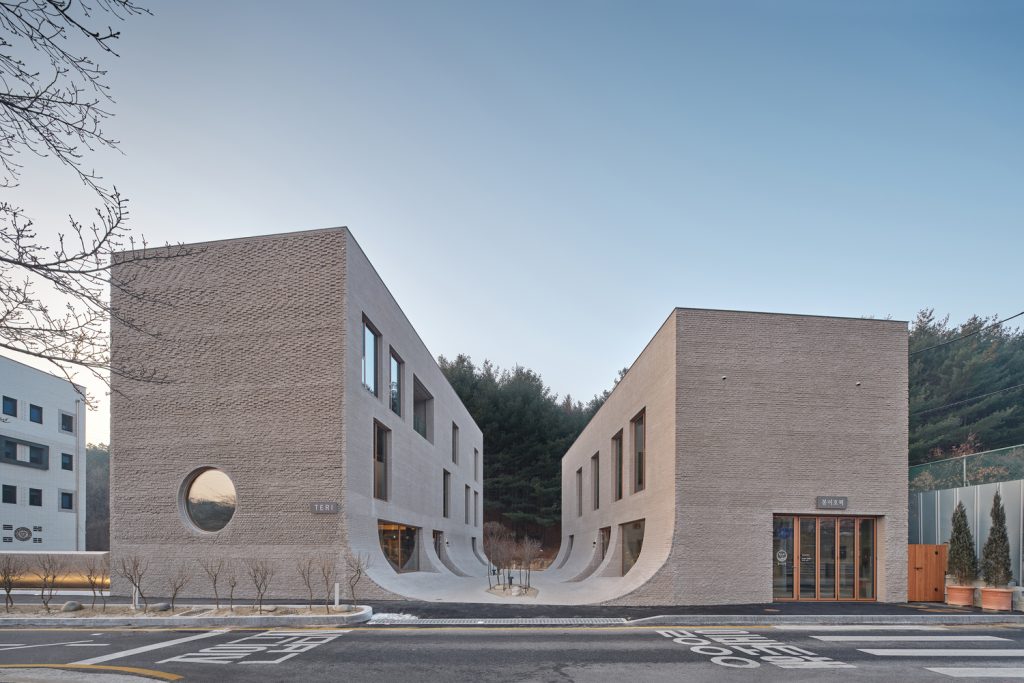
Below the eastern foot of Gyeryongsan Mountain in Daejeon, South Korea, Nameless Architecture has designed and built Café Teri. The structure is composed of two separate buildings housing a café and a bakery, while an intermediate courtyard completes the U-shaped ensemble. The building is made of rough concrete bricks and curved façades that emphasize the continuity of the project and the fluid local topography. Read the full article here
The Chuan Malt Whisky Distillery – Neri&Hu Design and Research Office
- Architect: Neri&Hu Design and Research Office
- Place: Emeishan, China
- Year: 2021
- Photographer: Hao Chen
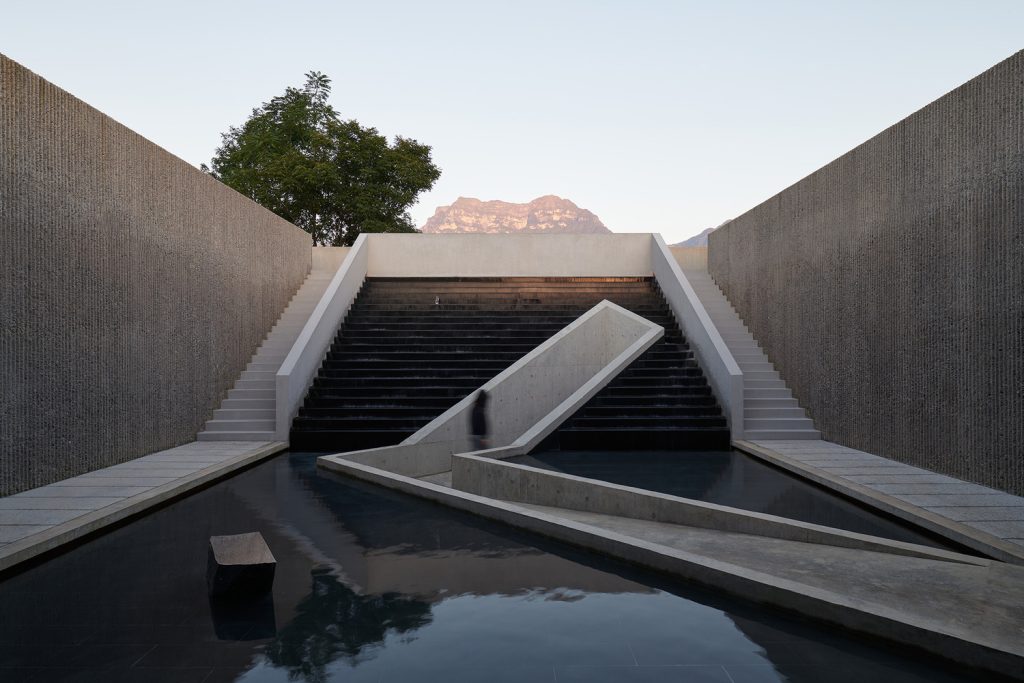
Along the Liu Creek in China’s Sichuan Province and against the magnificent Mount Emei, Neri&Hu has designed a sculpturesque distillery for whiskey brand Pernod Ricard. For over a thousand years Mount Emei has persisted as one of the most deeply spiritual places in China and was named a UNESCO World Heritage Site in 1996. The revered ground upon which our site sits has a rich history itself – through the centuries, this land was once an impressive monastery, the site of several historic battles, and a stopping point along many pilgrimage and trade routes. While any built remnants of the past no longer remain on site, its very emptiness is powerfully suggestive of all of its fabled memories. Three years ago, Neri&Hu won the design competition and took up the challenge of designing a distillery and home for Pernod Ricard’s first whisky in China, an opportunity to create a timeless architecture that speaks to the core values of a visionary new brand as well as the material and cultural heritage it aspires to sustain. Read the full article here
The Arc at Green School – IBUKU
- Architect: IBUKU
- Place: Bali, Indonesia
- Year: 2021
- Photographer: Tommaso Riva
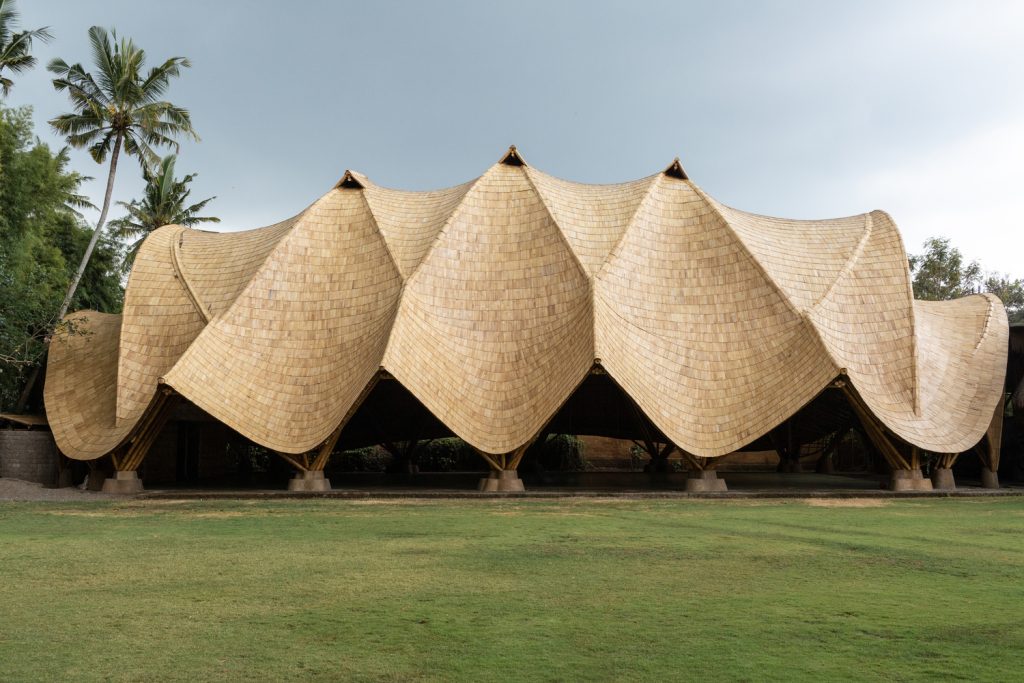
The first building of its kind ever made, the Arc structure built on the Green School campus in Bali represents the opening of new, possible horizons for the world of organic architecture. Built in eight months, this new wellness space and gymnasium is built from a series of intersecting 14 m tall bamboo arches spanning 19 meters, interconnected by anticlastic gridshells which derive their strength from curving in two opposite directions. The 41 m long and 23,5 m wide structure required months of research, development and fine tuning of tailor-made details by the IBUKU’s multidisciplinary team, who collaborated with Jorg Stamm for the carpentry and with the British structural engineering company Atelier One. The result is a technically revolutionary construction with unparalleled beauty. Read the full article here
Monologue Art Museum – Wutopia Lab
- Architect: Wutopia Lab
- Place: Beidaihe District, Qinhuangdao, China
- Year: 2022
- Photographer: CreatAR Images, Seven W
In Qinhuangdao, China, the Monologue Art Museum by Wutopia Lab opened on the park green of Seatopia in July 2022. The Museum is dedicated to those who, as the architects say, want to ‘be free from worldly distractions.’ The design comprises three no. buildings of 1,300 m2 each. Arranged into different monoliths and combined with walls, corridors, and ambiguous space, the triangular-shaped Monologue Art Museum emerges. The spatial sequence of the Museum slowly and poetically reveals itself to visitors. Read the full article here
